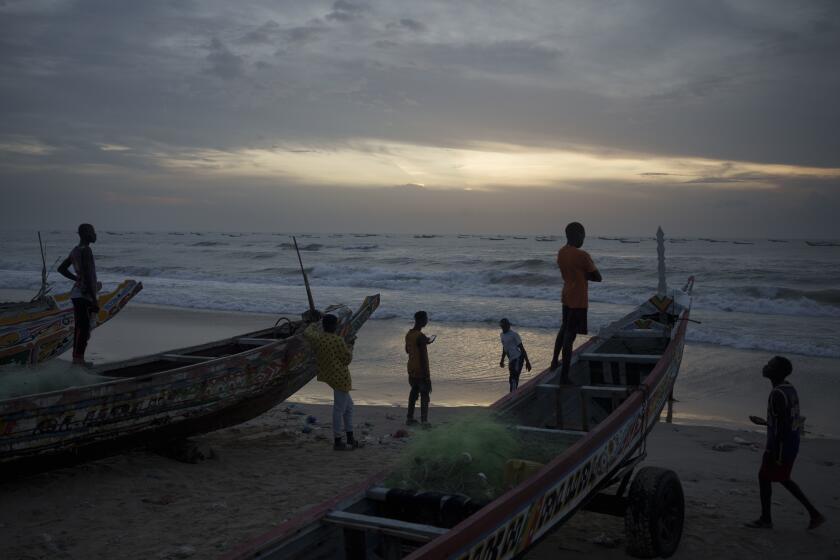Change is brewing as more Indians hoist a glass
It’s 5 o’clock on a Tuesday afternoon and James, Moses and Santosh are into their third (or is it fourth?) pitcher of Kingfisher beer at the Down Town pub in Bangalore, enjoying last call of the “gulp one, get one free” happy hour, which actually runs for 7 1/2 hours, but who’s counting?
The twentysomething students and part-time IT workers won’t give their last names because, they explain, if their parents knew they were drinking, they’d be in big trouble.
“It’s a break from work pressure,” says James, 21. “Everyone drinks in our college, but our parents still think drinking is a terrible habit.”
India is undergoing a social transformation of the drinking kind as long-standing taboos among the country’s mostly Muslim and Hindu population erode in the face of globalization, Hollywood films, a rapidly expanding urban middle class and a new focus on instant gratification.
“It’s really changing,” says Rajesh Gill, a sociologist at Punjab University. “There are more pubs, more young people who associate with Westernism and modernity.”
But that change tends to be concentrated in the cities. “As with most things in India, there are two worlds,” says Sundeep Kumar, a director with SAB-Miller India, India’s second-largest brewer. “The majority, especially in the village, still sees alcohol as the root of all evil.”
Despite having lived under the control of the pub-loving British for nearly two centuries, Indians consume only 1.3 liters a year per person on average — less than one night for your average English punter — compared with 82 liters for Americans.
That’s left brewers salivating over the vast potential in a country with 1.1 billion people, a young population and very hot weather. Over the next few years, the market is expected to grow by 13%, among the world’s fastest, compared with 8% for China.
Tapping that potential is far tougher than it seems, however, given India’s poor infrastructure, local protectionism, legendary bureaucracy and a moral overhang.
Temperance movements have long flourished in India, particularly after 1910, when they combined with a push to oust the British imperialists, leading to the picketing of liquor shops.
India’s Constitution after independence, influenced by the teetotaling father of the nation, Mahatma Gandhi, set out prohibition as a national goal.
Over the years, most states have quietly dropped their ban — the tax revenue’s too tempting — with the noted holdout being Gujarat, Gandhi’s birthplace.
Beer consumption has also been hurt by India’s rather loopy taxation system, which is based largely on volume rather than by alcohol content, the system used in most countries. That encourages people to drink hard liquor over beer because you get more rip for your rupee.
“Indians tend to drink to get drunk,” Kumar says, “giving alcohol a bad name.”
India’s states also erect numerous barriers against one another, the equivalent of New Mexico taxing products made in California. That’s encouraged big beer makers to build breweries in every major state, including places such as water-short Rajasthan, which reduces efficiency and harms the environment. Deliver the wrong bottle to the wrong state and you risk smuggling charges.
“India’s 28 states are like dealing with 28 countries,” says Samar Shekhawat, marketing head for United Breweries, India’s largest brewery.”It’s our single biggest challenge.”
Another wrinkle: India has one state-run liquor store, bar or licensed restaurant for every 20,000 people, compared with a global average of one for every 250 people.
“It’s a real hassle buying beer,” says Javel Patel, 19, a pharmacy student enjoying a pitcher of Foster’s with a friend in Bangalore. “They’re crowded, hard to find and close early. My sister runs a supermarket in Nashville, and in America you can get beer almost anywhere.”
Corruption in licensing and distribution is also a concern, insiders say, in a country where more than $5 billion is paid annually in bribes, according to anti-corruption watchdog Transparency International.
Not that British brewers of yore were always so upright. “It’s a tale of corruption, money, rivalry and scientific innovation in a high-stakes market,” Canada’s Standard newspaper said of Britain’s beer history in India in a 2000 article.
Although India had brewed sugarcane liquor for generations, the British introduced beer — an essential component of troop morale — in the late 1700s after having established their rule over the subcontinent.
Initial efforts to brew in India failed after the yeast went berserk in the heat. Shipping porter and stout from England didn’t work well, either, with most spoiling during the months-long voyages.
In the early 1790s, however, London brewmaster George Hodgson produced an ale with more hops and alcohol. This better weathered the voyage, while its bitter taste masked spoilage. It was soon dubbed India pale ale for its lighter complexion.
Pale ale is no longer produced in India, but there are signs of regulatory progress as India recently allowed its first microbreweries.
But old habits die hard: Ajit Sreenivasan, 52, a Bangalore hotelier, says he was in his mid-40s before he dared share a beer with his father — and only after the patriarch insisted.
Anshul Rana in The Times’ New Delhi Bureau contributed to this report.
More to Read
Sign up for Essential California
The most important California stories and recommendations in your inbox every morning.
You may occasionally receive promotional content from the Los Angeles Times.










